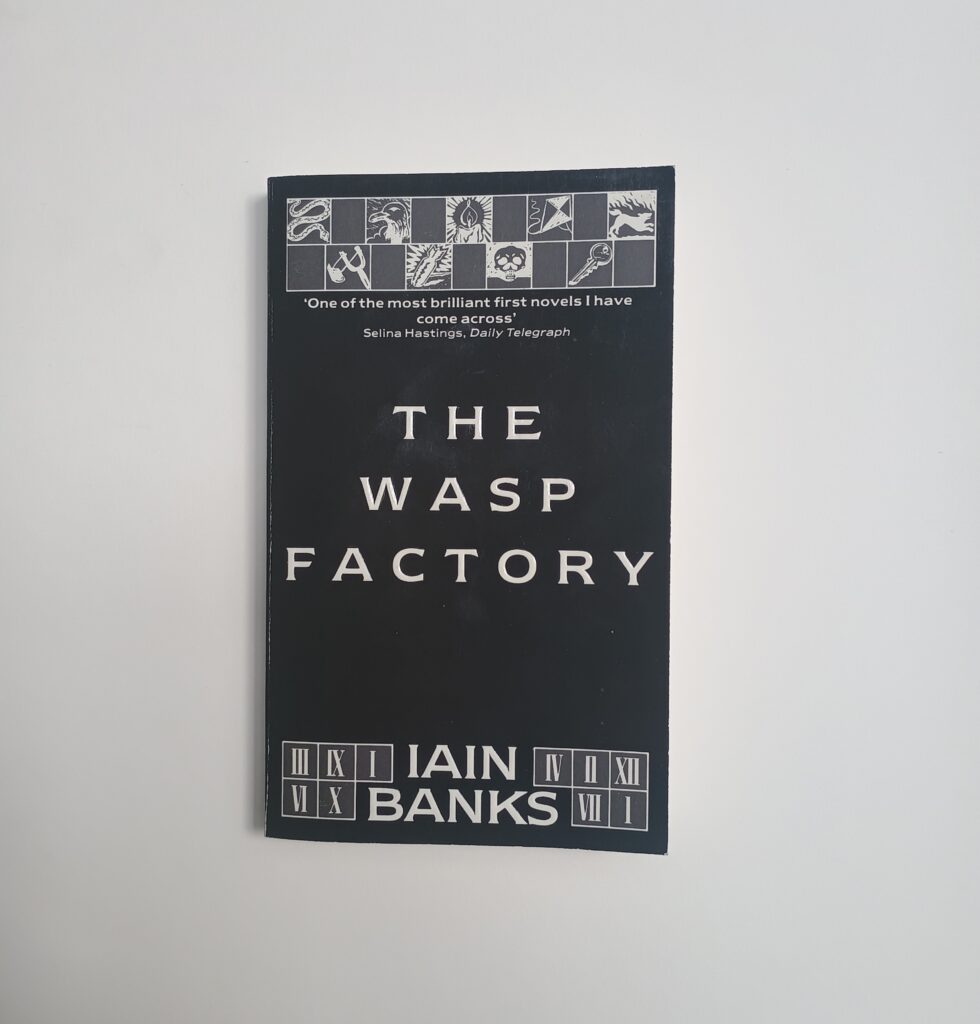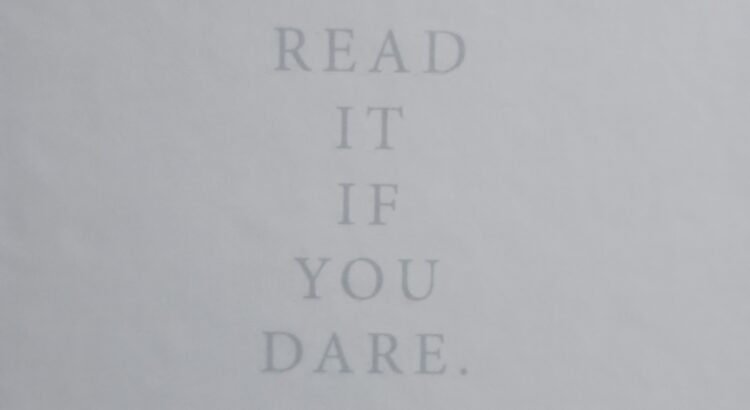Iain Banks published his debut novel “The Wasp Factory” on 16th February 1984 which was also the author’s 30th birthday. Abacus have slightly belatedly published a 40th anniversary edition which includes a number of interesting design features. As well as a small wasp on the book’s spine it has illustrated endpapers. If you remove the dust jacket and look at the back cover you will see the phrase. “Read it if you dare”. This comes from a review of the novel that appeared in the “Daily Express” which further warned that “If you are squeamish or easily frightened, then leave “The Wasp Factory” severely alone.” This reviewer admired the novel, especially for its dark humour but the reviewer in “The Sunday Express” was less impressed. “A silly, gloatingly sadistic and grisly yarn of a family of Scots lunatics, one of whom tortures small creatures – a bit better written than most horror hokum but really just the lurid literary equivalent of a video nasty.”
The novel polarized critical opinion. Some reviewers considered it an outstanding first novel, others thought it a book of unparalleled depravity. Even those who hated it though had to admit the author had talent. At least unlike most first novels it got noticed, which resulted in good sales, especially when the paperback edition was published a year later. The publisher unusually decided to include quotes from negative as well as positive reviews on the cover of the paperback.
The novel is narrated by 16 year old Frank who lives on a remote Scottish island where he spends most of his time killing any animals he comes across, mainly rabbits. As well as animals Frank has also killed three of his young relatives, but apparently that was just a stage he was going through. Frank’s older brother Eric is in a mental hospital, a result of something he saw when he was a trainee doctor in a hospital ward for children. The description of what he saw is the most disturbing scene in the book and perhaps in all of 20th century Scottish literature.
The novel was the start of a hugely successful literary career for Banks. When he died of gallbladder cancer at the age of 59 in 2013 Banks had published 28 works of fiction, his final novel “The Quarry” would be published posthumously. If Banks was 30 when the novel was published that means he would have been 70 this year if he had lived. The anniversary is therefore tinged with sadness and the knowledge that the prolific Banks would likely have already added another six or seven novels to his bibliography. “The Wasp Factory” is very much a young man’s novel and when it was published it helped introduce a generation of young readers to literature. We will never know what books Banks might have written as an old man. They probably would have been as depraved and grotesque as his debut but in a completely different way.
Banks wrote one non-fiction book, “Raw Spirit: In Search of the Perfect Dram” (2003). In it Banks drives around the Highlands on a quest to find the best malt whisky. So perhaps we should raise a glass to “The Wasp Factory” which is now an established cult classic and its sadly late author. Then dare to read “The Wasp Factory” for the first time or revisit it. When I did recently I found that I began to read a little more slowly when I suspected the novel’s most disturbing scene was coming up. The book has retained its power to disturb.

